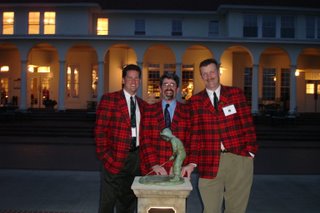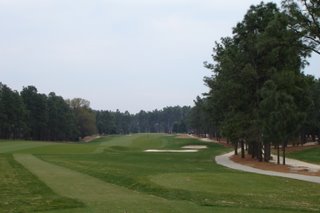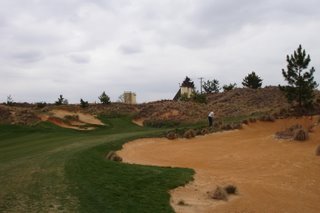My Thoughts on Being a Member of the ASGCA

Two of my good friends, Gil hanse and Art Schaupeter
Ever since I was about 13 years old, I wanted to be a golf course architect and eventually become a member of the ASGCA. I finally got voted in three years ago. The funny part was while I was eligible for many years; I did not join due to the cost and the lack of clarity in the application process. While the standards are simple (5 new courses where you have a lead role in the project), the grayness of standards leaves a lot of confusion.
I always wondered if I was eligible due to Doug’s insistence on routing all the courses before handing them over. Well it turns out that is fairly common in large firms and is understood by the committee; but you still have to spend about $5,000 that you cannot recuperate, to find out what they think. That sucks in my books. I finally joined when my wife told me should would not go anywhere with me and the kids until I had joined. I always bailed and took the kids to Florida in the winter with my initiation money.
“I never quite knew what the ASGCA experience would hold for me, and I was skeptical about joining.” from one of the current associates
Well I have now been to two meetings and I’m honestly not convinced of whether this is the right or wrong thing to do. It certainly is an expensive habit and I still don’t understand the benefits beyond great friendships. I hope that will simply come with time.
I went to the last meeting with some thought about dropping the idea of the ASGCA if the money became a burden - but I must admit that the week definitely made me change my mind. I don’t know how this will play out, but I was convinced to stay. A few new friends (members) in particular spent a lot of time with me sharing their experiences and ideas for how to run a small successful business. Essentially we all convinced each other that we are not crazy and set up a nice support group for each other. This is priceless to me.
meeting Jack and Arnold, priceless
I enjoy the camaraderie and many close friendships that I have already picked up very quickly. The younger architects, in particular, are open and like to share ideas and enjoy constructive criticism to improve. The older members are always a highlight of each meeting, with their swapping of stories, I like being part of that history. The publications and initiatives to educate agencies are good for the future of golf development, and their benefit to me is obvious. I guess the question is more selfishly am I getting enough, when I’m spending so much money, which I really don’t have a lot of.
There are a few things that bother me about the society beyond cost. I find it hard to get involved, particularly since the committees don’t meet or report. I’m also at a loss in how the executive is appointed and how the membership has any role in the process. I’m fairly certain we do not, which is not very democratic. The society seems to be run by and for the larger firms at first blush. This will always sit poorly with me if I learn this is the reality.
I do want to get involved, Jeff Brauer tells me that is the way to get the most from it, but I’m not clearly sure how. I would also like more interaction between members so that I have more opportunity to share with them or learn from them. I want more clarity in how the society functions and have more input in its direction. I hope the new development of a Master Plan/Directive for the Society way help alleviate all these concerns. I’m certainly hopeful to this end.
So far it is certainly fun, the question is, is it beneficial?




